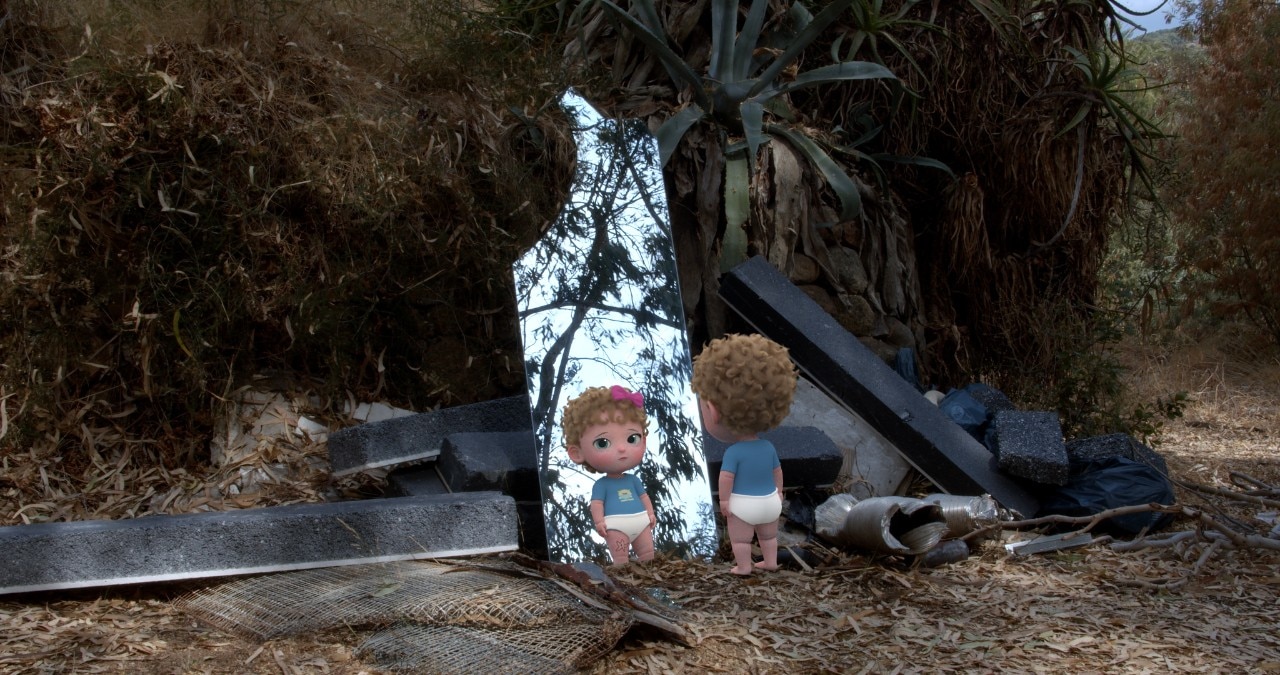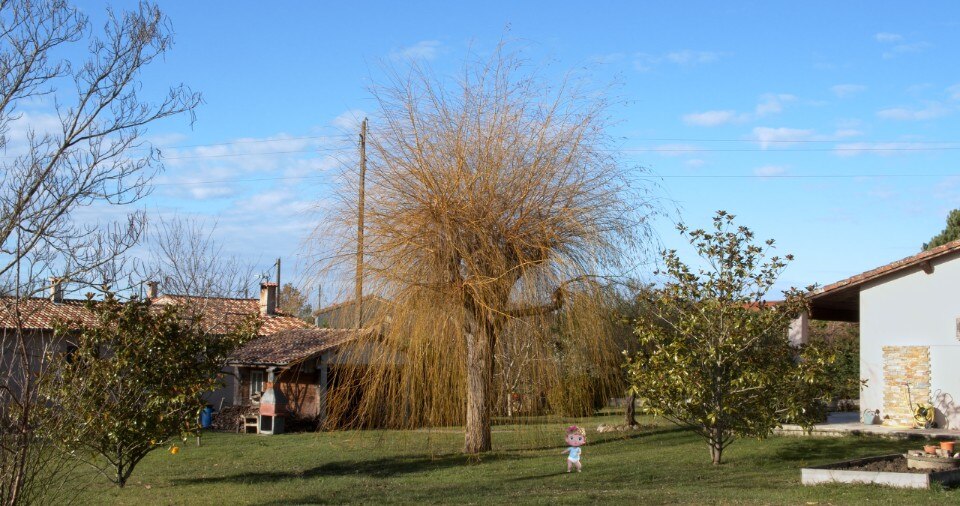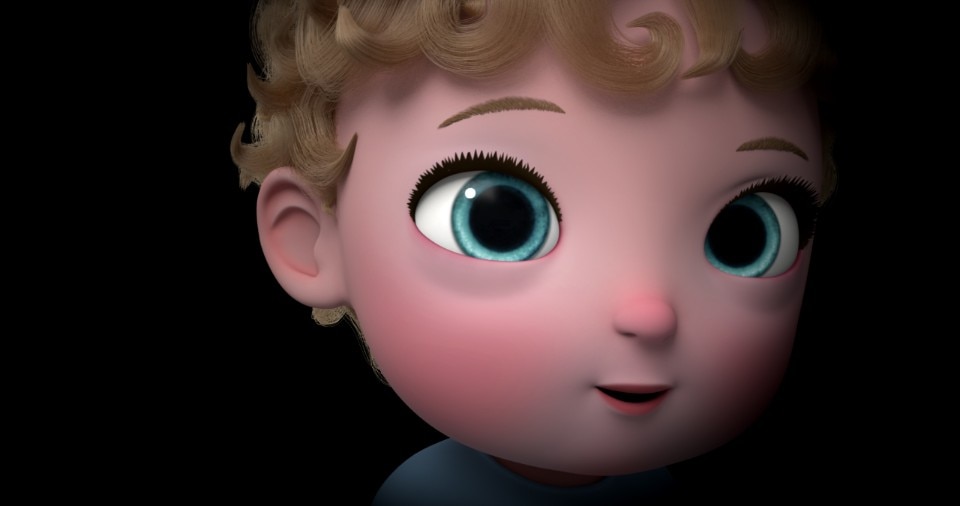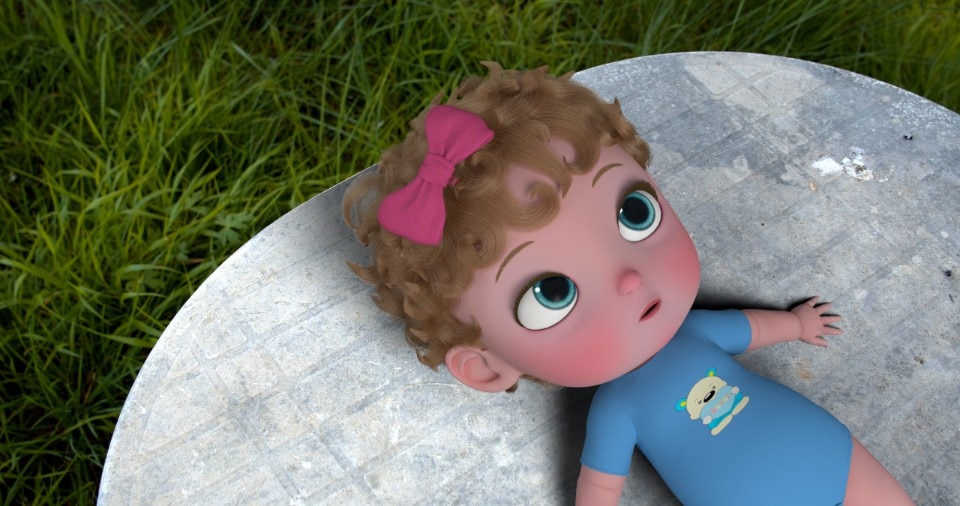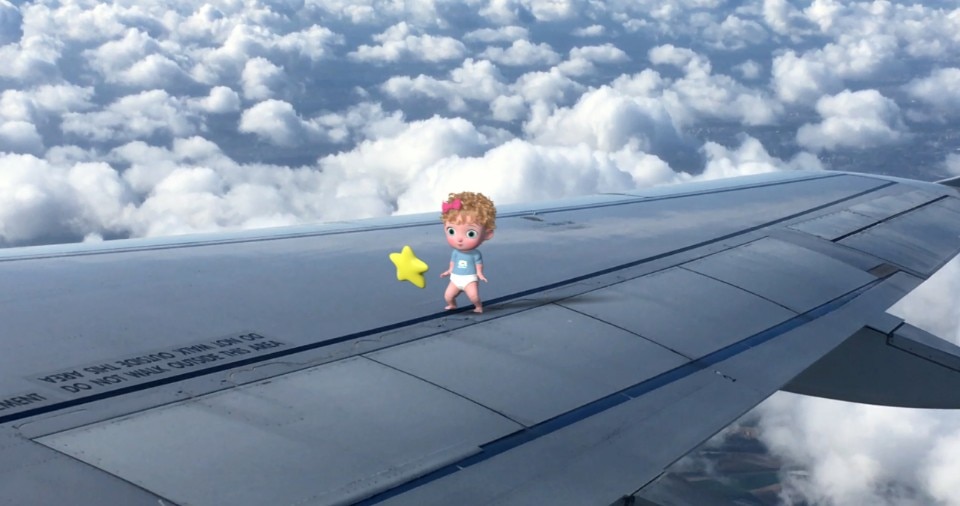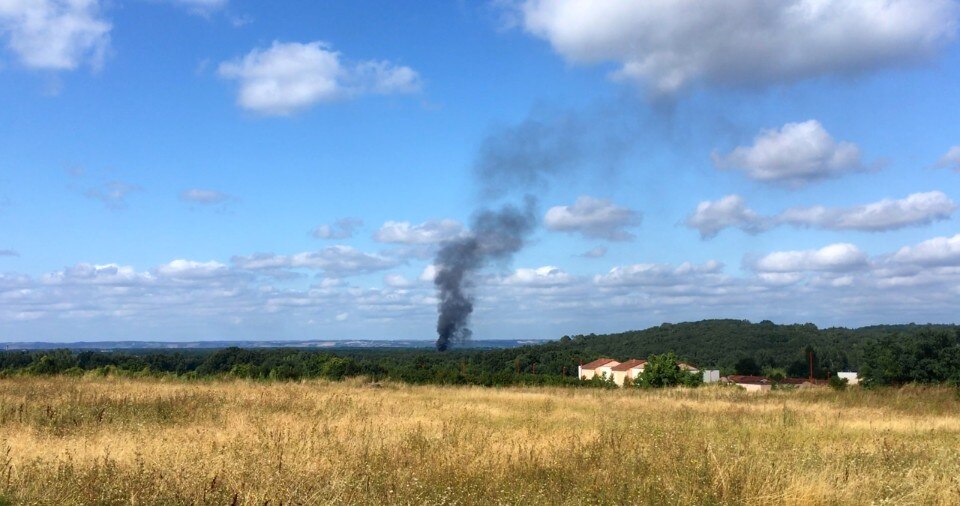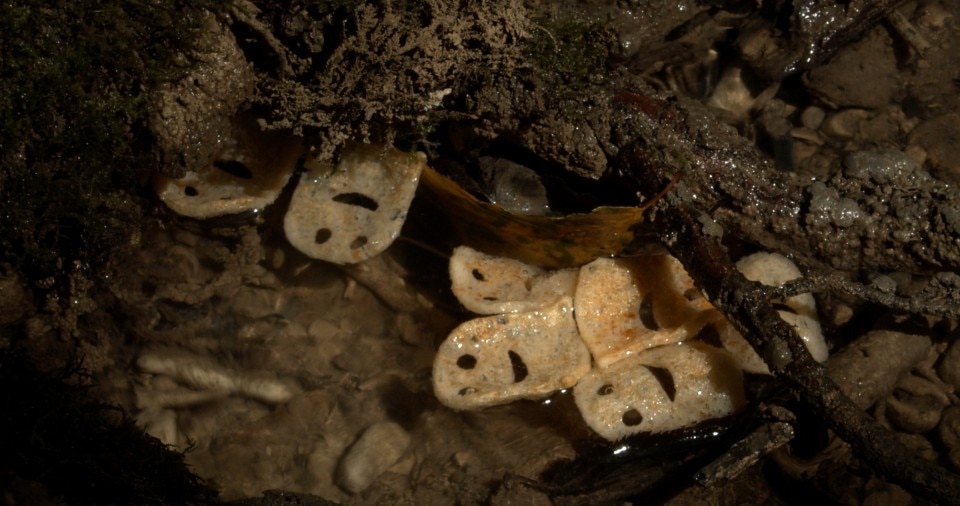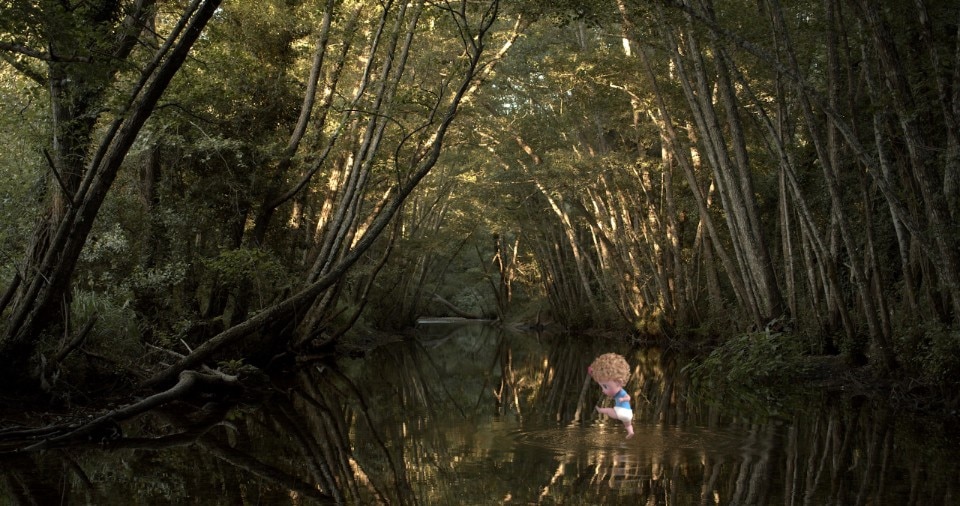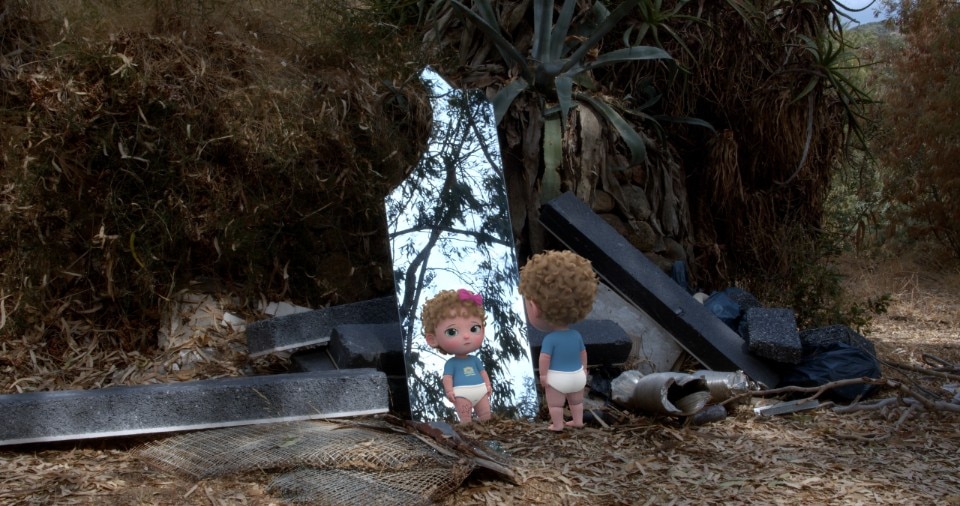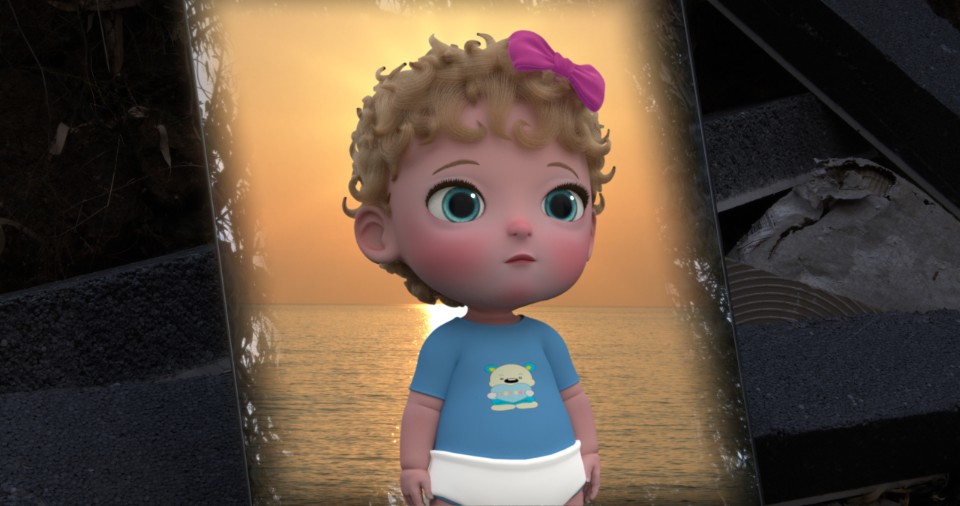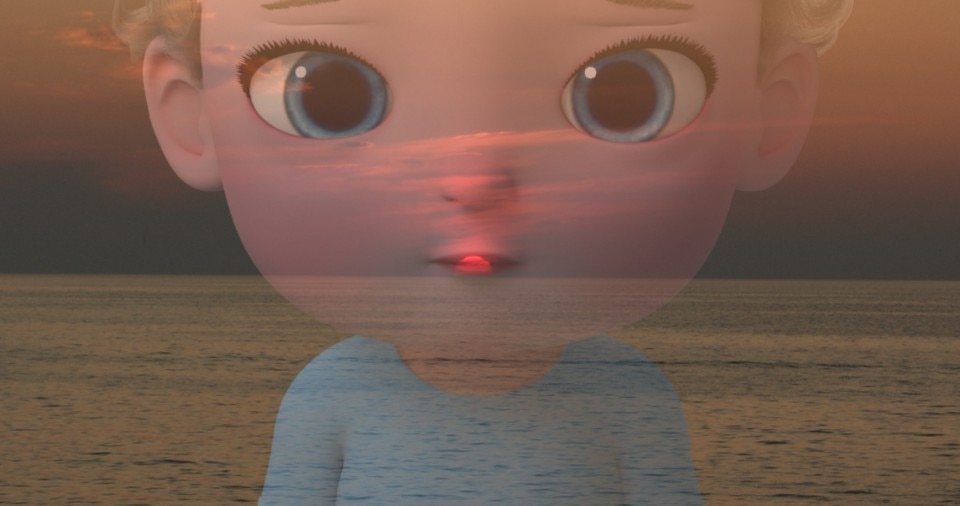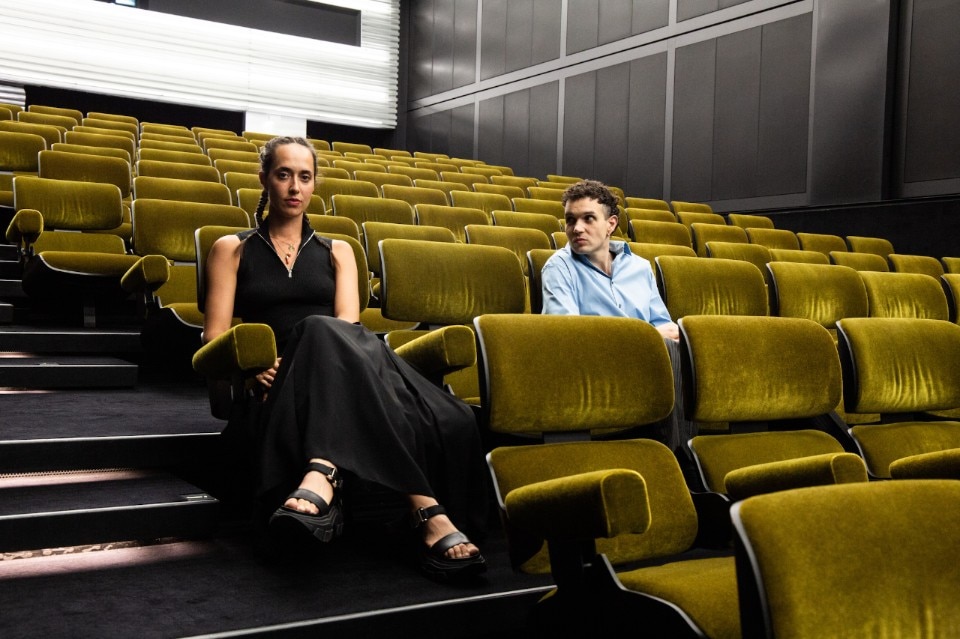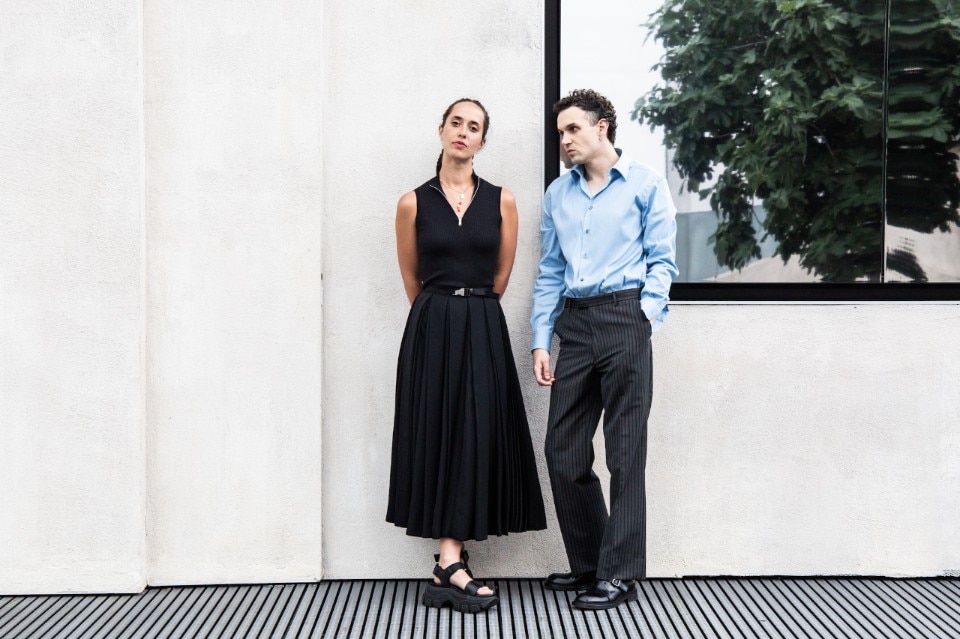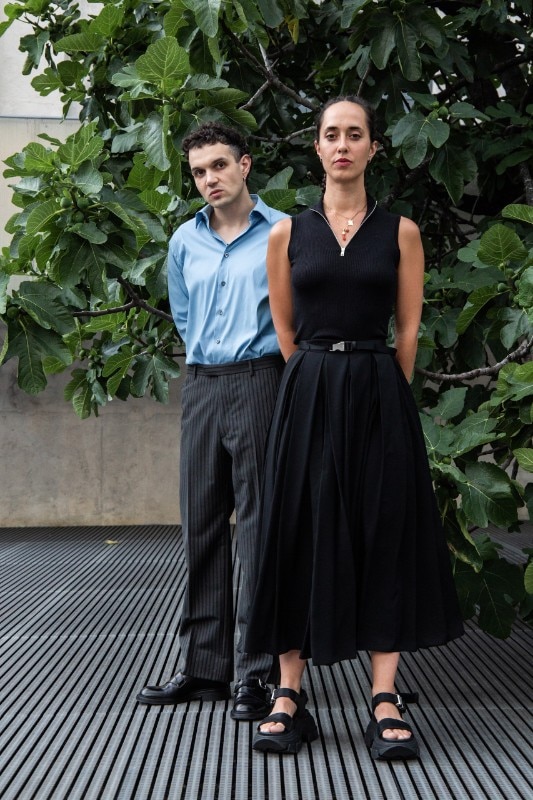As early as 1940, the avant-garde director Hans Richter identified the video essay as a form of expression capable of transcending the various genres classified in the film sector, through a transgression of linguistic conventions, in order to restore the creative freedom and complexity of the concerned topics. A series of “mental notion images” capable of “portraying concepts” which the Fondazione Prada’s online project Finite Rants, curated by Luigi Alberto Cippini and Niccolò Gravina, focuses on too. The Fondazione Prada commissioned eight international personalities among film-makers, artists, intellectuals and scholars to produce video works capable of drawing attention to the focal themes that emerged in 2020, a year of sudden and deep upheavals that affected the entire planet.
Among these, Bébé Colère, the CGI (Computer-Generated Imagery) creature created by Caroline Poggi and Jonathan Vinel, who in 2019 made their first feature film Jessica Forever, premiered at the Toronto and Berlin’s Film Festivals and appeared in the Fondazione Prada Cinema programming, did not remain undetected. Bébé Colère is the story of a little girl abandoned by those who gave birth to her, who from her earliest days must contend with adapting to a contemporary subjectivity and with the problems of the psychological development. The character, who is set in dreamlike, dystopian tones in cramped rooms, on the wings of planes in flight, by the sea, in the countryside and inhospitable forests, lives with the loneliness filled by imaginary friends, with existential questions and unanswered queries, oscillating between moments of sadness, illusion and despair.
When Fondazione Prada commissioned this film from you, what was the concept you had to follow? Was it easy for you to move in that direction?
Finite Rants’ idea was to experiment and question the form of the visual essay as a form in its own right in connection with the present. The Foundation’s proposal was made during the first lockdown. At a time when the cinema was paused and the majority of the images produced were documentary and/or journalistic. A new period, particularly strange and dark, full of doubts and uncertainties. Finite Rants’ aim was to embrace this unknown and this chaos. To explore and grasp the materials of the contemporary to express themselves. That’s how we took it and it was simple and natural for us to jump in that direction.
The Finite Rants series has the video essay as its leitmotif. Was it the first time you had to deal with this genre? How did you approach work?
We thought of visual testing as an address. We tried to give to the film the autonomy of a character, as if he started talking to us, living and taking his independence. This is how we hear the words “visual essays”, as unique, non-standard and autonomous objects. Generally speaking, we are familiar with this formal approach. We always try to transform our films into characters: by shaping matter, by creating ruptures, faults, splinters, symbioses... We’ve always been fed by these films: Godard, Marker, Farocki, Debord...
Do you consider the video essay a genre closer to the artistic or fully cinematic sphere?
It is precisely because it is neither one nor the other that the visual test is interesting. We must not be able to store it in a predefined box: it would lose all its identity and strength. The visual test is an unclassifiable object, mutant. It is a language apart, the result of an experiment. He moves the gaze, breaks the codes, erases the boundaries. The visual test is difficult to tell orally. You have to see it, feel it, live it.
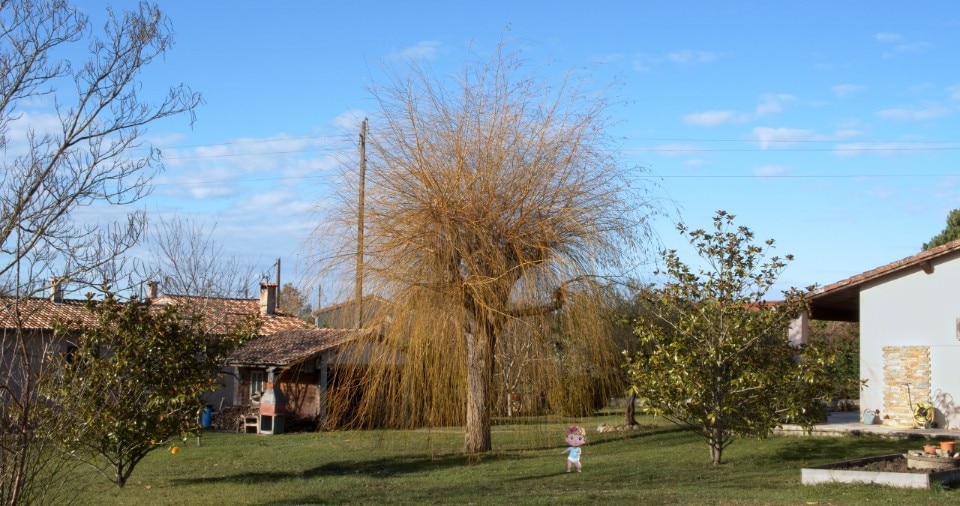
The film Bébé Colère is dominated by feelings such as frustration, consternation, loneliness, despair. Feelings of which an innocent, a new-born child is the victim. What about this film do you feel as autobiographical? Are there any elements that bring you personally to Bébé Colère?
Bébé Colère is literally our child. It was shot in our respective villages between Toulouse and Corsica, and we play the baby’s parents. The baby’s text was written all by itself, like a long vomit that we needed to get out of us. We needed to shape this anger, fear, doubt, disgust... These are the feelings that come from a frustration and violence that we feel. This is not something that works for the film. It is there, it is present in us and around us. It just happens because it’s that you can see people. Strangely, giving form to his emotions allows him to overcome them and not to sink into pure defeatist nihilism. There is something combative in the film. Because even if anger predominates, there is also the envy and belief of another.
The vicissitudes of 2020 have united the whole world, changing the habits of the entire planet. Is Bébé Colère also somehow a product of this year?
It is certain that Bébé Colère is the child of 2020 (and incubated in previous years...). The year 2020 was particularly constructive: it moved us, it took us out of a certain routine. It brought the world to its knees. Life has hardened and the State has taken a particularly important place in our lives, enacting new and increasingly restrictive rules. We now have the certainty that something is ending, for better or for worse, both at the same time. The year 2020 showed us that the norm is horror and that it is our comfortable routine that is unbearable.
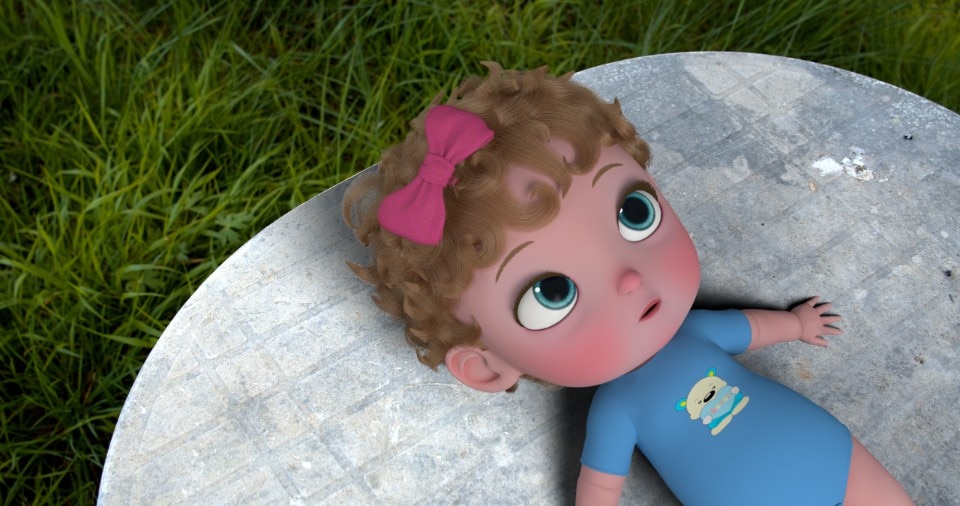
In the film made in CGI the main character is digital but the photographic backgrounds are drawn from reality. How did you choose them?
We first turned the ‘funds’ as we collect things we love. It was not intended to become backgrounds and there was no idea of making a movie with it, or putting a baby in it. It was just images of places that we know, that we love and that are part of us. We literally grew up in these spaces. We’ve seen them change, we see what’s left, what moves, what gets damaged. They are places that carry with them a baggage: they contain memories, opinions, lifestyles, an ideology, a relationship to the world. The baby appeared intuitively. He came to articulate these spaces between them. The baby is the thread that connects all the beads of the necklace. It is he who feeds all the disparate elements of the film and makes them alive.
In Bébé Colère is very present throughout its duration a punk element that clashes with the small protagonist figure. Why did you want to insert this contrast?
It’s a way of abusing the film precisely and being, of revealing emotions. It’s like a chemical reaction between two opposite elements: it creates, it destroys, it shakes, it explodes... Contrast creates flaws, gives relief, complicates figures and thought. We go there naturally because that’s where our emotions are born, sad or joyful. It’s something that stimulates us. It’s related to both tragedy and comedy. You’re drawn to the opposite extremes. You love to laugh as much as you love to cry. Our films have always worked on archetypes and clichés. In Bébé Colère, the contrast creates irony. The interesting thing about irony is that you never really know how to take things, if you have to be offended, laugh, cry, acquiesce... And despite everything, something goes through us, we react. And this even when the artifice is too visible and it appears as much. Basically, we all know that in baby words, there are pieces of truth, words that strike a chord, that make something vibrate in us. To put these words into a baby is to make them sound “pure”. Because the baby has no excuse. The baby is the zero being, he has just arrived in the world. He is brand new, all smooth, all cute. And it is already so disappointed and lost.
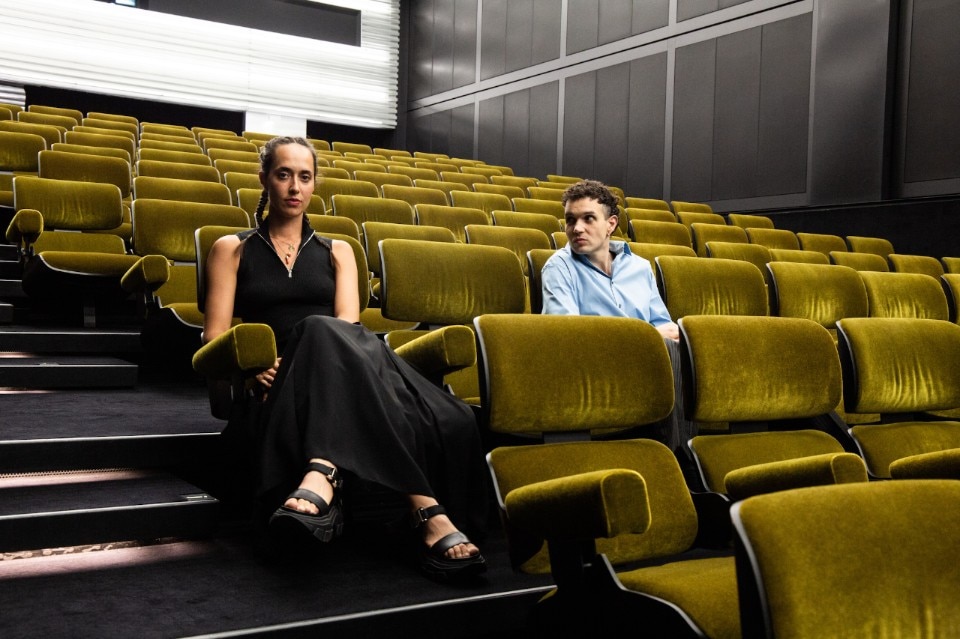
What are your inspirations, in the film world and beyond?
For this film, we had in mind The Songs of Maldoror. This long text at once awful and magnificent that exceeds and amuses our morals. It is a text that we do not know how to take, very mysterious and that is what fascinates so much. Bébé Colère is also directly inspired by the people who worked with it. Lucien Krampf, who manages the 3D part of the film, was there at the very beginning. Lucien has a real idea of the technique. He finds the solutions to bring the project closer to his artistic ambitions. When we talk to him everything seems simple and possible, which is relatively rare, precious and very motivating. Without him and his team (Stanislas Bécot and Hugo Glavier, ed.) Bébé Colère would not exist. Likewise, the collaboration with Barbara Braccini who plays the baby’s voice has greatly nourished the character and tone of the film. His slightly low teen voice helped to reinforce the contrast, the “dark” side of our cute Toon. We also used in the film two tracks of his first EP One Life (under the pseudonym of Malibu). We really like her music and we’ve wanted to do something with her for a long time.
What are your projects in progress today?
Finish writing our next feature film, get to carry out all the work we have in progress (short film, animation, etc). We have a lot of plans because we never know which one will be able to do it.
If you had unlimited budget and “carte blanche” on a video production, what would you like to create?
A film with an unlimited duration, which is always built and growing, with hundreds of characters crossing and mixing. A video that could go in all directions. Sometimes we would show bits and pieces, we would invite other artists to come and collaborate. It would be an infinite film like a big reunion, a big party that never ends but constantly evolves and seeks new directions. But it would be huge to not have to write a dossier to be able to make a film!


